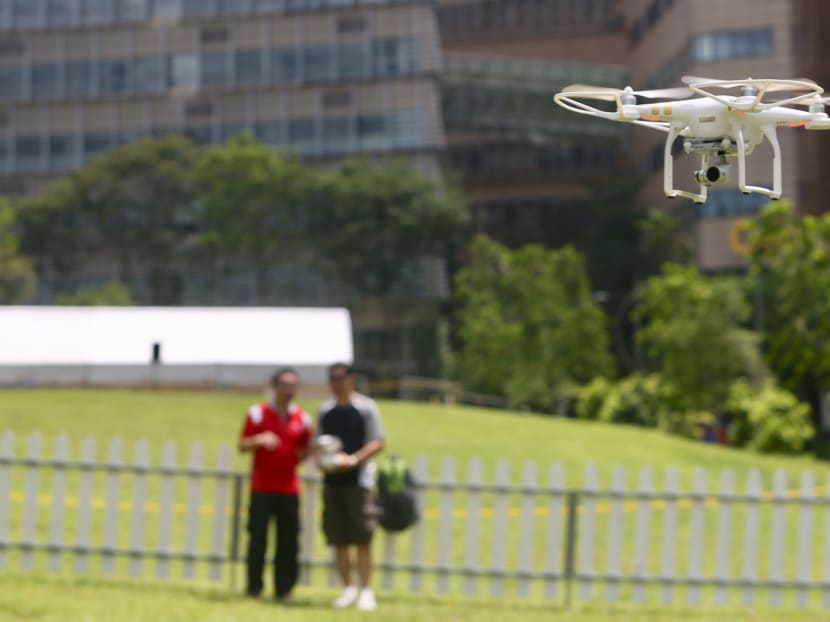Want to fly a drone? You may have to complete a compulsory online course first
SINGAPORE – Drone enthusiasts may soon have to complete a compulsory online training course or obtain a pilot license to equip them with the know-how to fly a drone safely.

Drone experts and hobbyists lauded the increased push for more education and safety, and greater clarity on the guidelines.
SINGAPORE – Drone enthusiasts may soon have to complete a compulsory online training course or obtain a pilot license to equip them with the know-how to fly a drone safely.
These proposed enhancements are part of the first-ever review to the unmanned aircraft (UA) regulatory framework which was first introduced in 2015, announced the Civil Aviation Authority of Singapore (CAAS) on Sunday (April 29).
The public consultation on these enhancements was launched on Sunday, as part of the drone showcase held during the first Car-Free Sunday outside the Civic District at one-north.
Unlike the current framework which lumps the UAs into two categories - of 7kg and below, or above 7kg – the new proposed rules will break them down into three tiers by differentiating between small, mid-sized and bigger drones of varying weights.
Users with drones weighing more than 1.5kg and 7kg will first have to undergo an online compulsory training programme, which will cover topics such how to maneuver it through various weather conditions and near buildings.
For those flying heavier drones weighing above 7kg and 25kg, they would need to sit through a new pilot licensing scheme, similar to how drivers obtain undergo theory and practical tests. Training organisations approved by CAAS will provide training to equip unmanned aircraft pilots the necessary skills and conduct the assessment.
And with the higher safety risk posed by those flying unmanned aircraft weighing more than 25kg, drone users may be required to obtain partial or full certification of the unmanned aircraft, certification of the operator, and carry out maintenance of UA with a certified maintenance organisation.
Currently, the unmanned aircraft regulatory framework only requires those flying such aircraft to apply for permits from CAAS, depending on purpose, weight of the unmanned aircraft and where it will be flown.
Commenting on the changes, CAAS director-general Mr Kevin Shum noted that that while the rapid growth in unmanned aircraft activities benefits both users and the economy, they can “pose a risk to aviation and public safety, particularly in Singapore's highly urbanised environment.”
"While we are keen to support the fast growing unmanned aircraft industry, this always needs to be balanced against the need to maintain high levels of aviation and public safety,” he said.
Drone experts and hobbyists lauded the increased push for more education and safety, and greater clarity on the guidelines.
Having the information compiled into one online course would be more useful, instead of having to trawl through different resources, said Singapore University of Technology and Design’s assistant professor of engineering product development Foong Shaohui.
A 1.5kg drone might not seem heavy, but Asst Prof Foong said that it could be dangerous if it falls on someone at high speeds. The course would thus equip users on the possible dangers and steps to take.
“Just as how drivers of cars have to learn how to drive responsibly, it would be good for operators of unmanned aircraft to learn how to fly one responsibly,” he said.
Agreeing, Mr Low Hsien Meng, 30, assistant principal engineer at ST Aerospace, said this “allows users to put in a bit more effort to understand about public safety”, as well as protect their drones.
Drone hobbyist and freelance trainer, who wanted to be known only as Mr Cheong, said that having some basic training is good, rather than simply buying it off the shelf.
“When there are strong winds, the drone may drift and a novice or first-time flier may not know what to do…so having some basic training would be useful,” the 53-year-old said.
The public consultation will close on May 31, and the changes are targeted to be implemented by the first quarter of next year.






